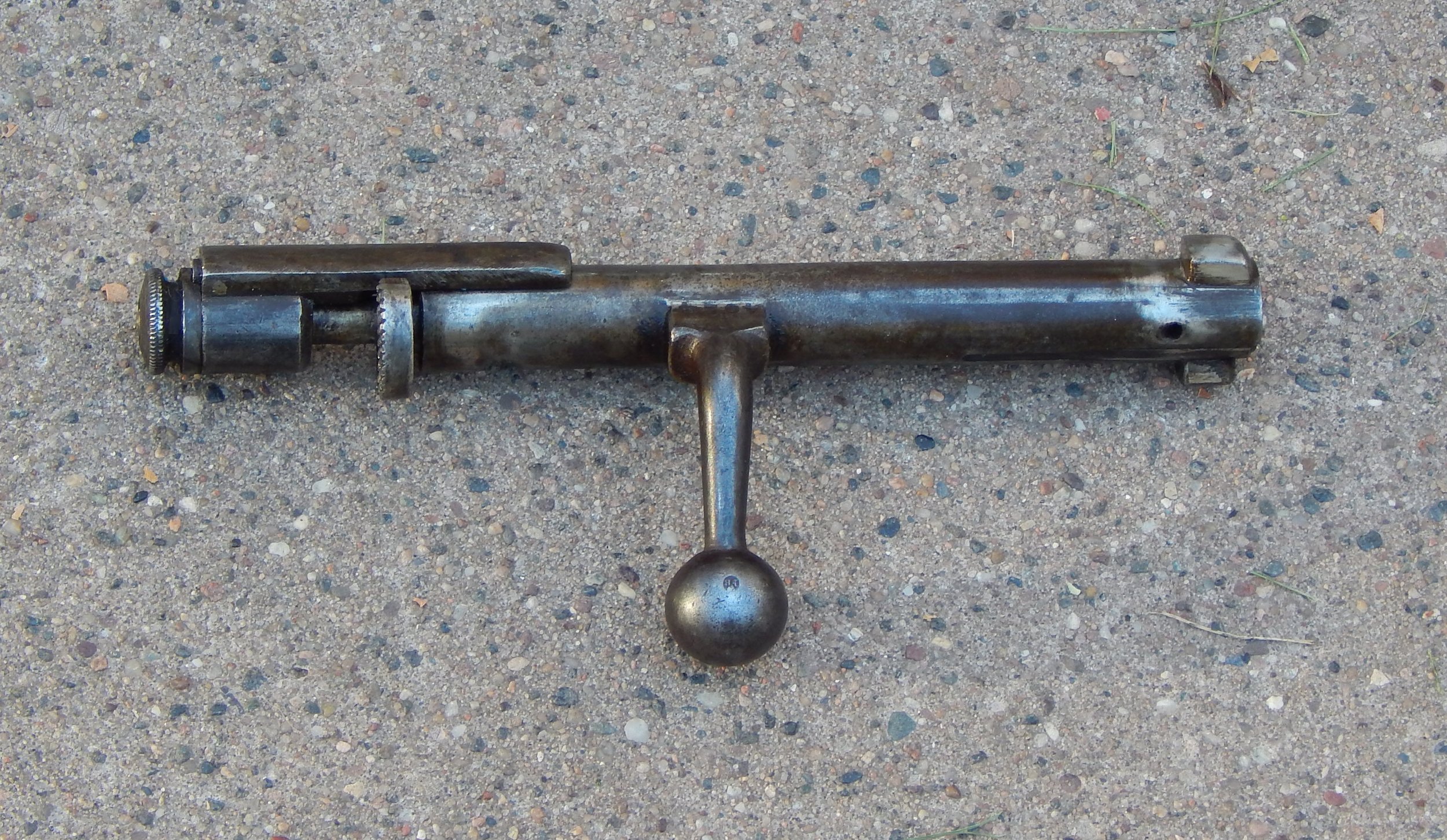Carcano Moschetto M1891
The cavalry carbine model of Italy’s Carcano is perhaps the most iconic of the series, having seen use by specialists such as the Arditi in the First World War as well as the Folgore paratroopers in the Second among many others.
The History
The Kingdom of Italy had adopted its smokeless repeating rifle in 1891, with the Carcano M1891 entering service, and with it came the need for carbines to issue to various specialist and support troops. Thus two designs were introduced: a full stocked carbine to issue to support units, and a folding bayonet carbine for mounted troops.
The rear sight in its 300 meter battlesight position
The latter model was issued both to the regular horse mounted cavalry as well as the Bersaglieri, specialists who rode into battle on specialized collapsible bicycles for rapid moving hit and run attacks. Entering in service in the summer of 1893, the new weapon was designated as the Moschetto, simply meaning “musket”, indicative of the intended diverse use of the weapon.
The rear sight, elevated to 1,150 meters to demonstrate adjustment
When the Great War began in 1914 the Kingdom of Italy remained neutral at first despite being technically allied to Germany and Austria, and indeed when they finally entered the conflict in 1915 they did so on the side of the Entente, engaging in a bitter war with the Austrians along the frozen Alps.
The front sight and batonet attachment
As the war settled into trenches, the short, light M91 carbine rapidly found a new niche as a lightweight and maneuverable weapon for trench raiding. The weapon, with its folding bayonet, became an icon of the Arditi, the elite Italian shock troops who were counterpart of such units as the German stormtroopers, trained specialists in close quarters combat. The weapon would remain iconic, and would be coopted by the Fascists shortly after the war.
The action, essentially unchanged from the M1891 rifle aside from the bent bolt handle
In the Second World War the M91 carbine remained in service, being issued to a variety of units including the Fascist Blackshirts and Italian paratroopers. Crude clones were manufacuted as well for issue to the Italian Fascist Youth, the Balillas, and customized variants with black stocks and chromed metal components were issued to the Moschettieri del Duce; Mussolini’s bodyguard units. After the war large numbers of these carbines remained in service, with stockpiles in some Italian police arsenals only being surplused in the early 21st century.
The Design
The safety in its “off” position
The basic action of the M91 carbine is identical to that of the M91 rifle, aside from a bent bolt handle. It is chambered for the 6.5x52mm cartridge, and is fed via six round Mannlicher type clips, which eject out the bottom of the rifle when the last cartridge is chambered. It is, however, significantly shorter than the infantry rifle, and with the lightened nature of the weapon makes for one of the handiest weapons of its era.
The safety engaged, locking the bolt and detensioning the firing pin spring
The most distinctive feature of the M91 carbine is its folding spike bayonet. Retained under the barrel, this is a relatively thin three-sided blade attached to the front sight base. The original production rifles were fitted with a sliding catch, but when combat use in the First World War demonstrated the weakness of this feature a switch type lock was installed, until in the latter part of the war a spring loaded button was introduced that would remain standard until the end of production.
This Example
The buttplate, with its compartment for storage of the two piece cleaning rod
The example used for this writing is a typical late World War I example, with the later button style bayonet catch. It was produced in 1918 by the arsenal at Brescia in Italy, and is one of the number recently imported into the United States from Italian police stocks. The weapon has had its stock replaced during a 1946 arsenal repair, and is otherwise in excellent overall condition.
Opinions
The carbine with its bayonet extended
The Carcano series as a whole is often maligned, but is in reality a solid, simple rifle that was within the means of Italy at the time of its adoption. The M91 carbine is among the lightest and handiest of the weapons of the First World War, and that makes for a very enjoyable shooting experience.
The bolt removed from the rifle, showing its dual locking lugs
The most significant fault in the system comes from its clips. With a clip in good condition the rifle can be relied upon for rapid loading and consistent feeding, but when the clips are improperly formed or simply fatigued due to age they can cause issues with feeding, in particular with the feeding of the last cartridge.
The loaded six round clip for the Carcano rifle
All considered, the M91 carbine remains an affordable piece of history with a connection to a major power in both World Wars and beyond, and is worthy of a place in any collection.
Italian soldiers armed with M91 Carbines are inspected in Greece, 1917
Observed Values and Frequency
Updated: February, 2024
AVERAGE VALUE (USD): $150 - $200
FREQUENCY: Surplus
COLLECTOR’S NOTES: Current surplus is available from Italy and Ethiopia, with Italian guns in far better condition.
Three bayonet lock varieties exist, in order of rarity: a sliding lock, a lever, and a push-button
The earliest models lacked a handguard












